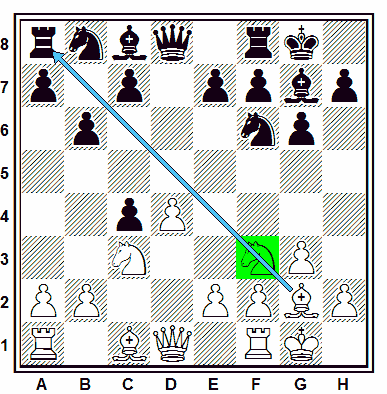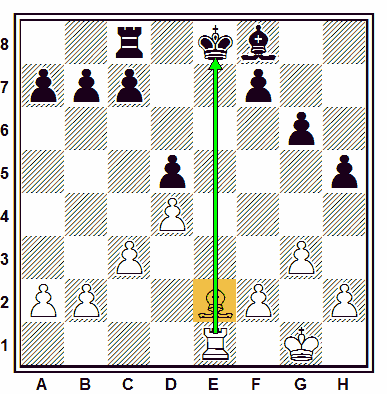| Idiot-proof chess help | |
Affiliates Navigation |
The Discovered Attack
The discovered attack occurs when a piece is able to attack an enemy piece once a friendly piece moves out of the way. It's not the greatest definition ever (I may have been tired or something when I wrote it), so let's take a look at the principle in the form of a diagram:
"White to move. He can move the f3-knight (on the green square), thus enabling the g2-Bishop to carry out a discovered attack on the a8-Rook." Of course, as the Bishop cannot capture the Rook until the next move, Black could easily block the attack with ...c6. There are several ways in which the discovered attack can be made more powerful; one of these is the double attack, in which the piece moving out of the way also makes a threat. An example is present in the above diagram: should White move his f3-Knight to either e5 or d2, it would threaten the c4-pawn. Now, when Black plays ...c6 to shield the Rook from the Bishop, White can win the c4-pawn with Nxc4. The discovered check is another type of discovered attack; here, the target piece is the King. A bare-bones example of a discovered check can be seen in the next diagram:
The double check is the most powerful discovered attack. This is the same as the discovered check, except that the moving piece also gives check. An example from the above diagram would be 1. Bb5++. Now, 1...Kd8 is forced, with mate to follow. 1...Be7 is impossible due to the Bishop check, as is 1...c6 due to the Rook check. This means that when a player is double-checked, he must move his King, as it is the only way in which both checks can be alleviated. Forum link: http://z6.invisionfree.com/ChessResources_Forum/index.php?showtopic=515If you have any feedback, questions or additional advice, please don't hesitate to post them here. © 2004-2020 Chess Resources King. All rights reserved. |

